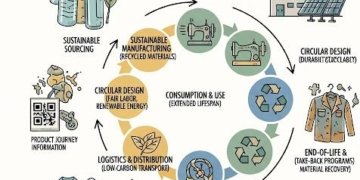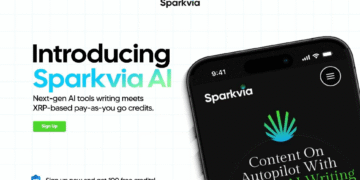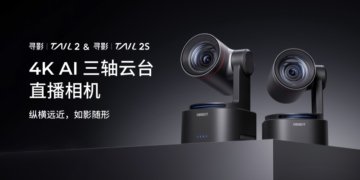Geneva, Switzerland – 20th August 2025. MPAI – Moving Picture, Audio and Data Coding by Artificial Intelligence – the international, non-profit, unaffiliated organisation developing AI-based data coding standards – has concluded its 59th General Assembly (MPAI-59) approving the publication of the MPAI Metaverse Model – Technologies V2.1 with a request for Community Comments.
The earlier 2.0 Version of Technical Specification (https://mpai.community/standards/mpai-mmm/tec/v2-1/) MPAI Metaverse Model (MMM) – Technologies (MMM-TEC ) already supported digital twinning of real-world environments and their blending with MMM-TEC-specified virtual environments. The new MMM-TEC V2.1 supports “analogue twinning” of virtual- with real-world environments opening attractive industrial metaverse applications. This is achieved by introducing new “Process Actions” (speech acts of an MMM-TEC process sent to another process) and the notion of R-Item (real object) that can be MU-Added (placed at a U-Location, a location in the real world), MU-Moved (moved from a U-Location to another U-Location along a Trajectory), and MU-Animated (animated) in sync with a Persona (the rendering of a Process as an avatar) in the metaverse.
Among the several other innovations included in MMM-TEC V2.1, we mention Change Property, a Process Action whereby a Process changes – if it holds the Rights – the place where and object is located; its properties such as perceptibility, size, mass, gravity, and texture; audio properties such as reflectivity, reverberation, diffusion and absorption; an audio or light source; and the emotional state of an avatar.
MPAI standards are best described as a web of interconnected specifications. The new technologies needed by MMM-TEC are partly specified by Object and Scene Descriptors (MPAI-OSD), Portable Avatar Format (MPAI-PAF), and Data Types, Formats and Attributes (MPAI-TFA). They are now at versions V1.4, V1.5, and V1.4, respectively.
Register to attend the presentations of the many innovations added to
-The MMM-TEC V2.1 standard (https://mpai.community/standards/mpai-mmm/tec/v2-1/ ) on 12 September at 15 UTC (https://bit.ly/4oNsTzb).
-The MPAI-OSD V1.4 (https://mpai.community/standards/mpai-osd/v1-4/ ) and MPAI-PAF V1.5 (https://mpai.community/standards/mpai-paf/v1-5/) standards on 12 September at 10 UTC (https://bit.ly/4n3Qiux).
-The MPAI-TFA standard (https://mpai.community/standards/mpai-tfa/v1-4/) on Wednesday 17 September at 15 UTC http://bit.ly/4oPbohI)
-The MPAI-GME V2.0 standard (https://mpai.community/standards/mpai-gme/v2-0/) on Friday 26 September at 14 UTC (https://bit.ly/3Vjhh9m).
MPAI is continuing its work plan that involving the following activities:
1. AI Framework (MPAI-AIF https://mpai.community/standards/mpai-aif/): reference software, conformance testing, and application areas.
2. AI for Health (MPAI-AIH https://mpai.community/standards/mpai-aih/): reference model and technologies for a system enabling clients to improve models processing health data and federated learning to share the training.
3. Context-based Audio Enhancement (CAE-DC https://mpai.community/standards/mpai-cae/): new projects.
4. Connected Autonomous Vehicle (MPAI-CAV https://mpai.community/standards/mpai-cav/): Functional Requirements of CAV architecture.
5. Compression and Understanding of Industrial Data (MPAI-CUI https://mpai.community/standards/mpai-cui/): preparation for extension of existing standard.
6. End-to-End Video Coding (MPAI-EEV https://mpai.community/standards/mpai-eev/): video coding using AI-based End-to-End Video coding.
7.AI-Enhanced Video Coding (MPAI-EVC https://mpai.community/standards/mpai-evc/). video coding with AI tools added to existing tools.
8. Governance of the MPAI Ecosystem (MPAI-GME https://mpai.community/standards/mpai-gme/): working on version 2.0 of the Specification.
9. Human and Machine Communication (MPAI-HMC https://mpai.community/standards/mpai-hmc/): model and technologies enabling a human or a machine to communicate with a machine or a human in a different cultural environment.
10.Multimodal Conversation (MPAI-MMC https://mpai.community/standards/mpai-mmc/): reference software, drafting conformance testing, and new areas.
11. MPAI Metaverse Model (MPAI-MMM https://mpai.community/standards/mpai-mmm/): reference software and metaverse technologies requiring standards.
12.Neural Network Watermarking (MPAI-NNW https://mpai.community/standards/mpai-nnw/): reference software for enhanced applications.
13. Object and Scene Description (MPAI-OSD https://mpai.community/standards/mpai-osd/): finalising V1.2 and developing reference software, conformance testing and new areas for digital humans.
14. Portable Avatar Format (MPAI-PAF https://mpai.community/standards/mpai-ara/): reference software, conformance testing and new areas.
15. AI Module Profiles (MPAI-PRF https://mpai.community/standards/mpai-prf/): to specify which features an AI Module supports.
16.Server-based Predictive Multiplayer Gaming (MPAI-SPG https://mpai.community/standards/mpai-spg/): technical report on mitigation of data loss and cheating.
17.Data Types, Formats, and Attributes (MPAI-TFA https://mpai.community/standards/mpai-tfa/): extending he standard to data types used by other MPAI standards.
18. XR Venues (MPAI-XRV https://mpai.community/standards/mpai-xrv/ ): preparation for the development of the standard.
Legal entities and representatives of academic departments supporting the MPAI mission and able to contribute to the development of standards for the efficient use of data can become MPAI members (https://mpai.community/2022/11/02/seven-good-reasons-to-join-mpai/).
Please visit the MPAI website (https://mpai.community), contact the MPAI secretariat (secretariat@mpai.community) for specific information, subscribe to the MPAI Newsletter and follow MPAI on social media:
– LinkedIn (https://www.linkedin.com/groups/13949076/).
– X (https://twitter.com/mpaicommunity).
– Facebook (https://www.facebook.com/mpaicommunity).
– Instagram (https://www.instagram.com/mpaicommunity/).
– Youtube (https://www.youtube.com/@MPAIstandards).
– Bluesky (https://bsky.app/profile/mpaicommunity.bsky.social)
MPAI, c/o Me Olivier Brunisholz
5 Cours des Bastions
CH-1205 Geneva, Switzerland.
Moving Picture, Audio and Data Coding by Artificial Intelligence (MPAI) is an international non-profit organisation with the mission is to develop Artificial Intelligence (AI) enabled digital data compression specifications, with clear Intellectual Property Rights (IPR) licensing frameworks,
1. Of Moving Picture, Audio and Data Coding, especially using new technologies such as Artificial Intelligence, and
2. That facilitate integration of Moving Picture, Audio and Data coding components into systems.
This release was published on openPR.















